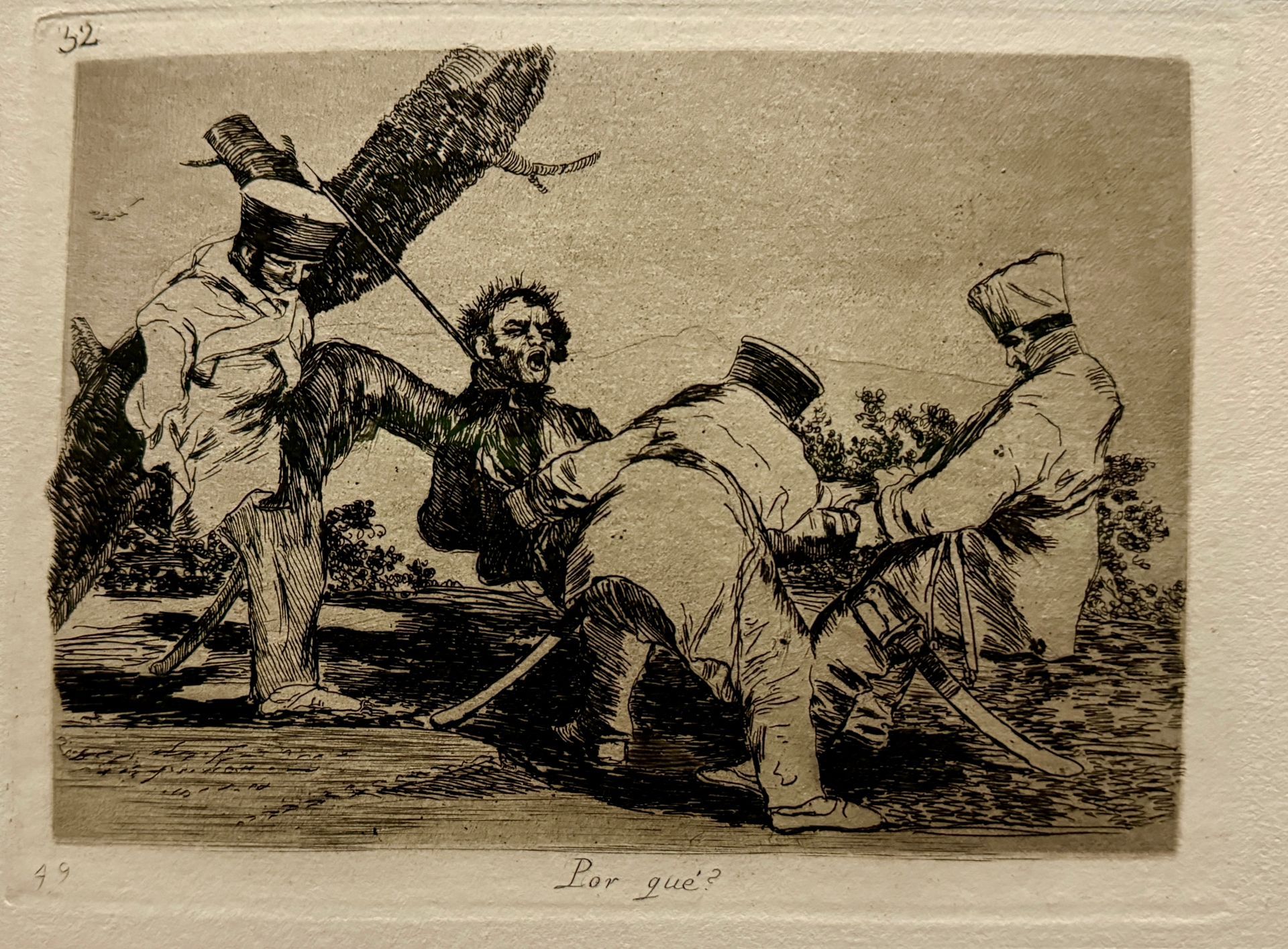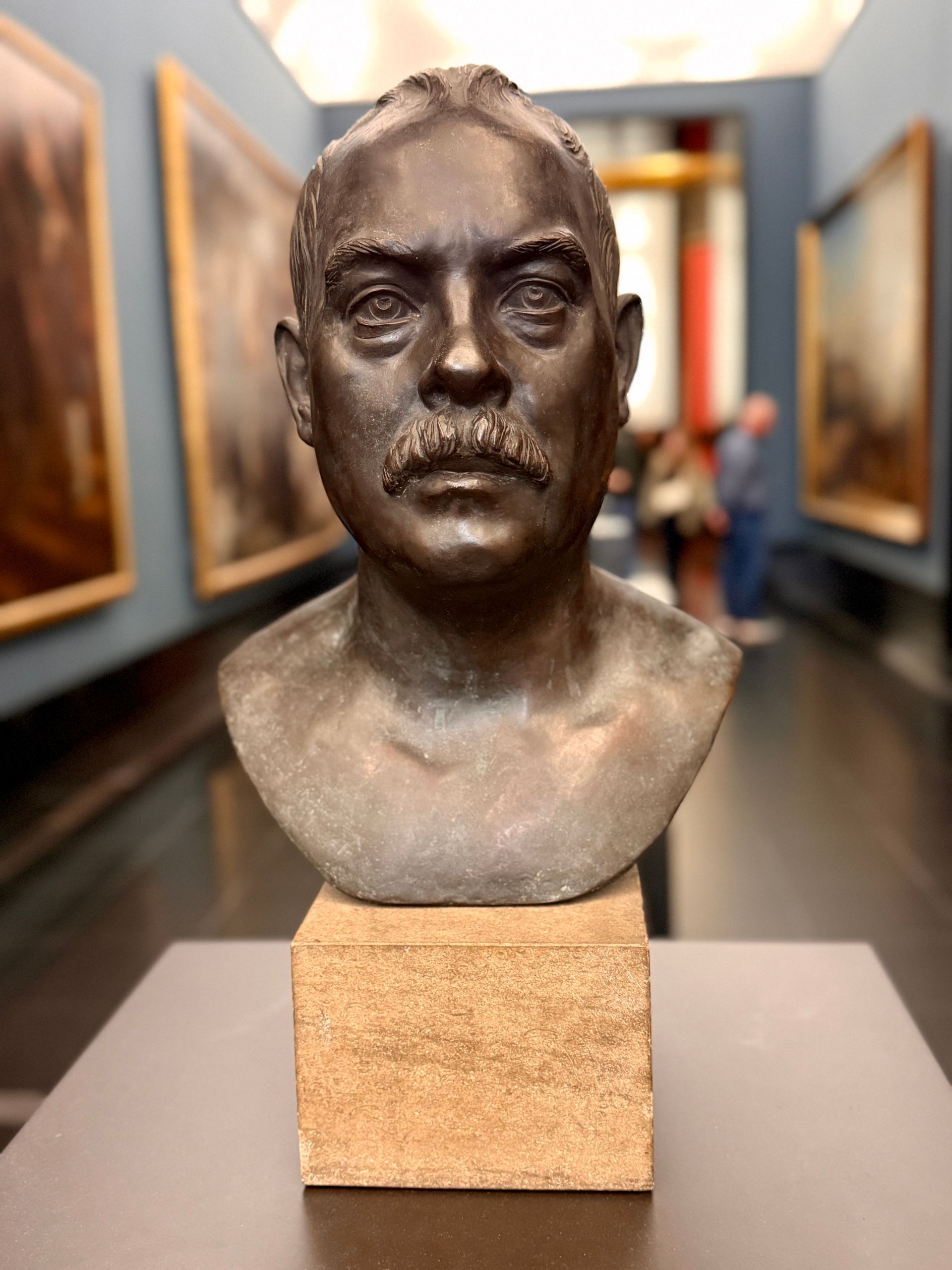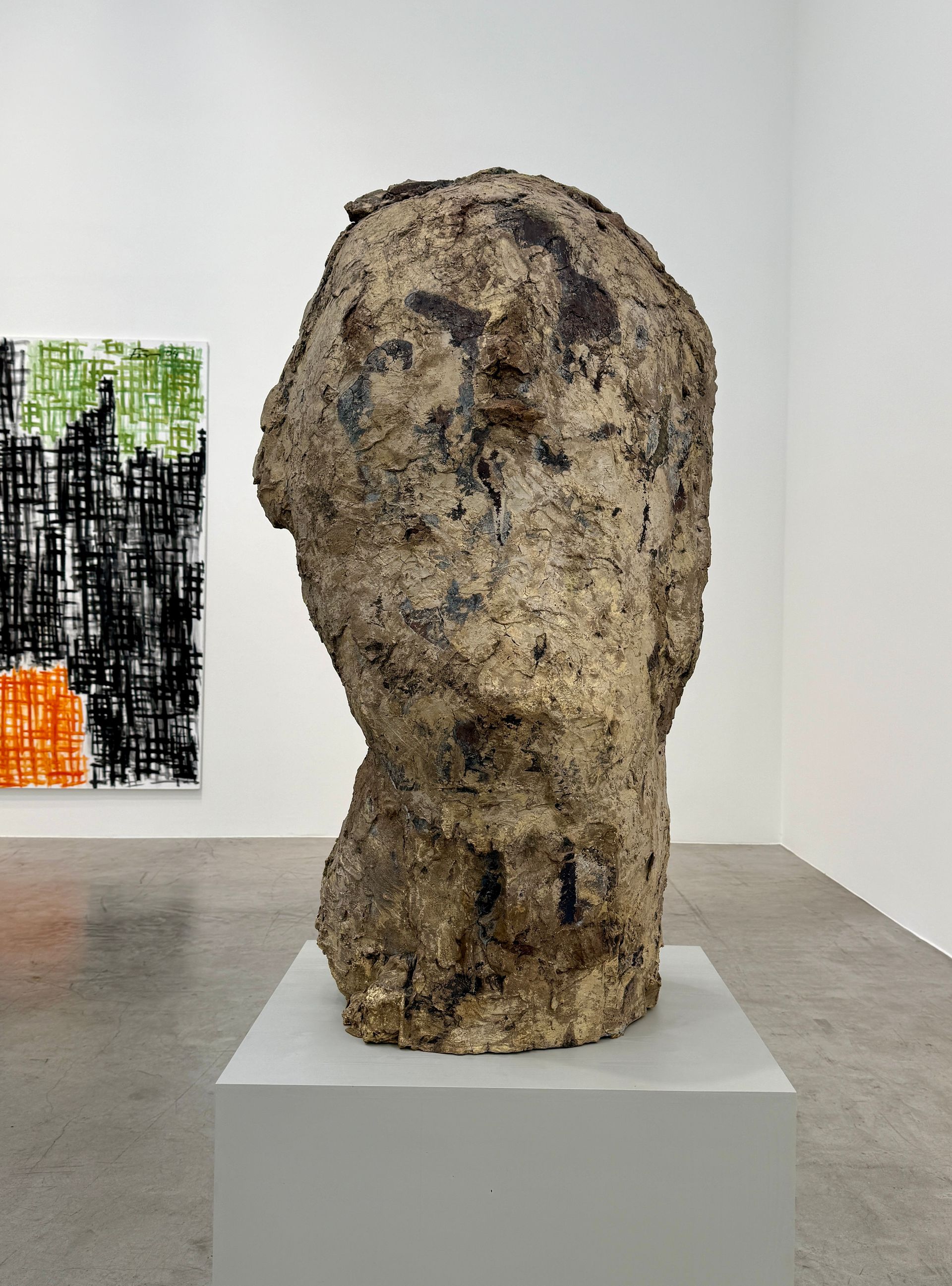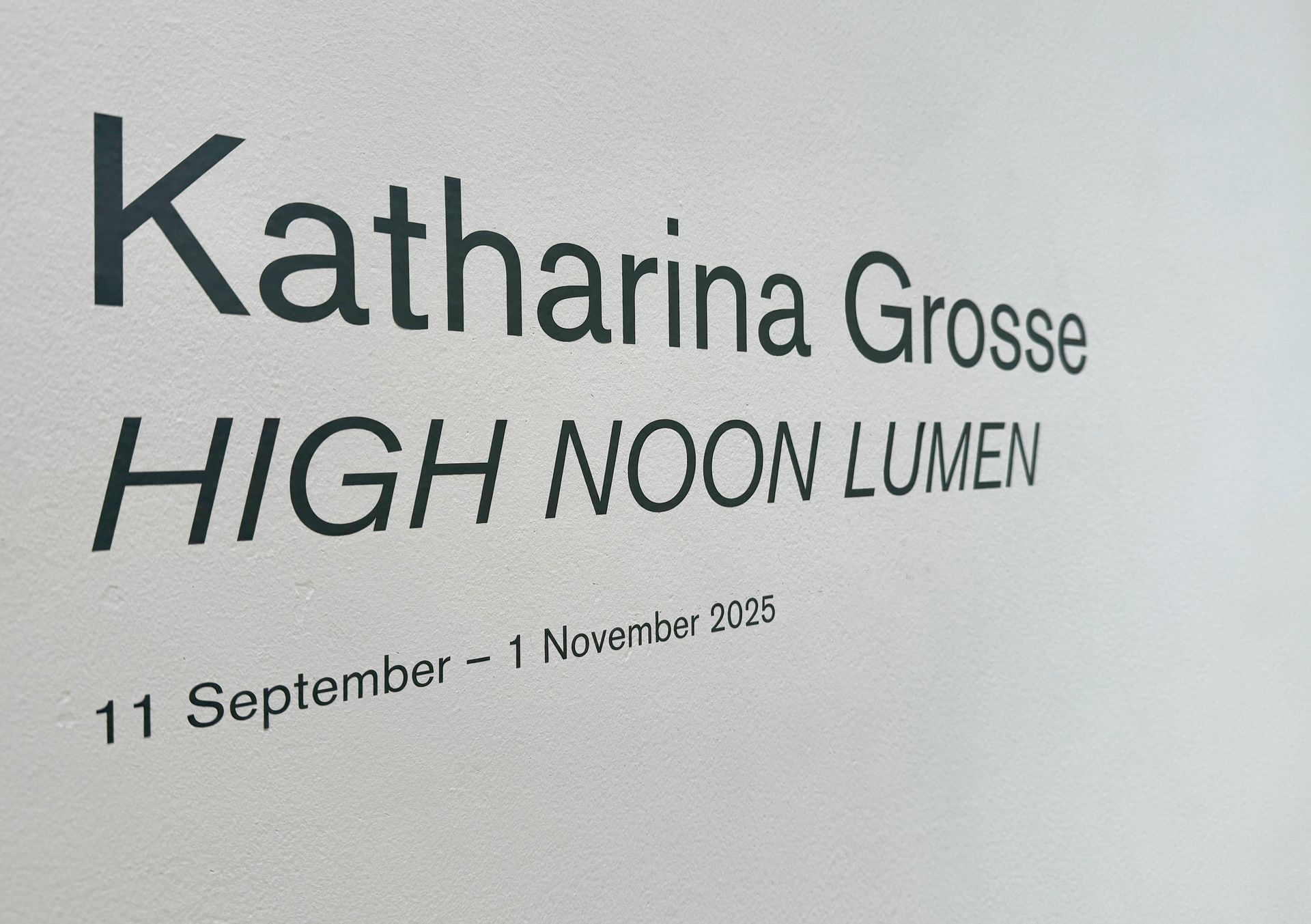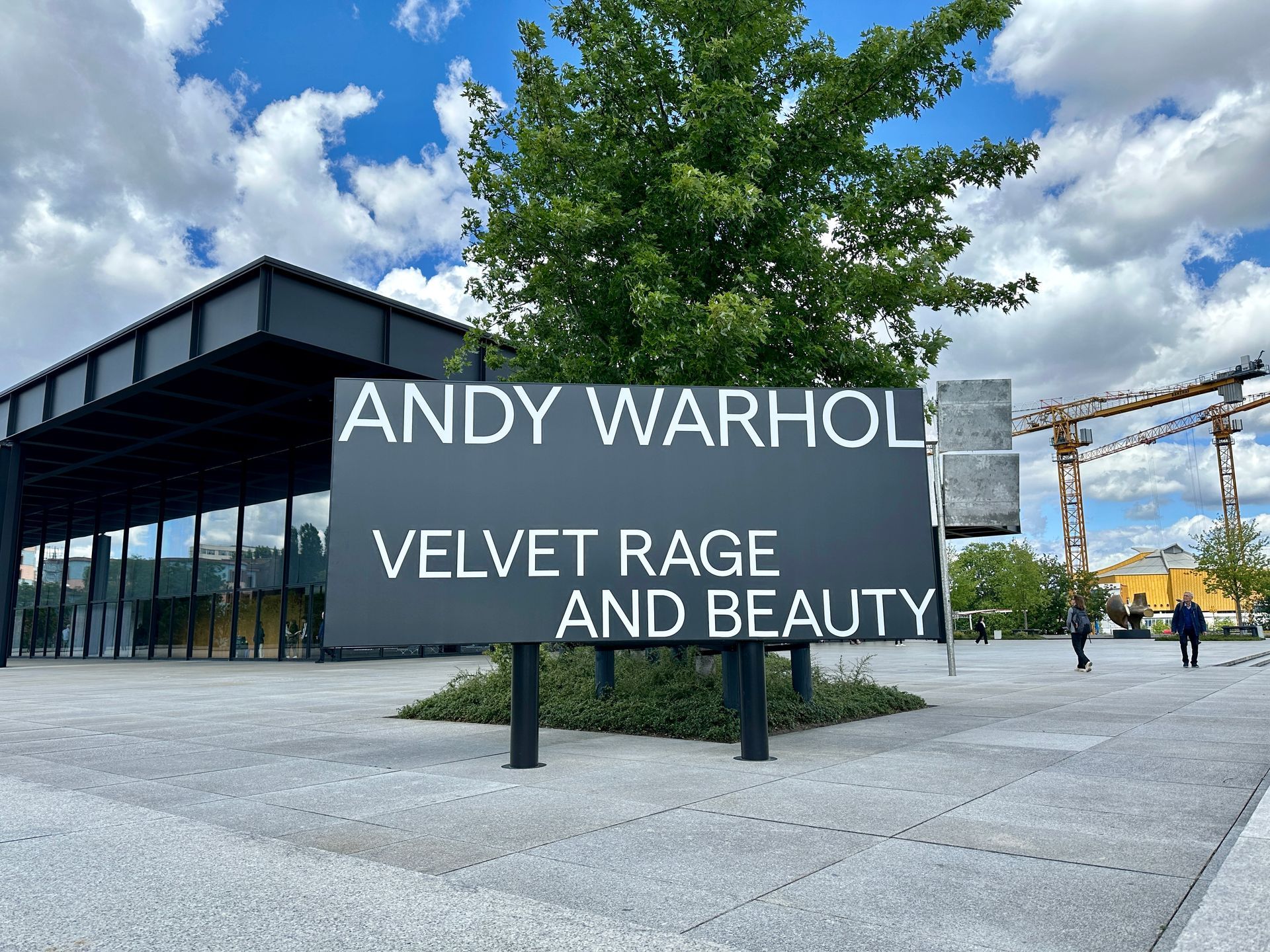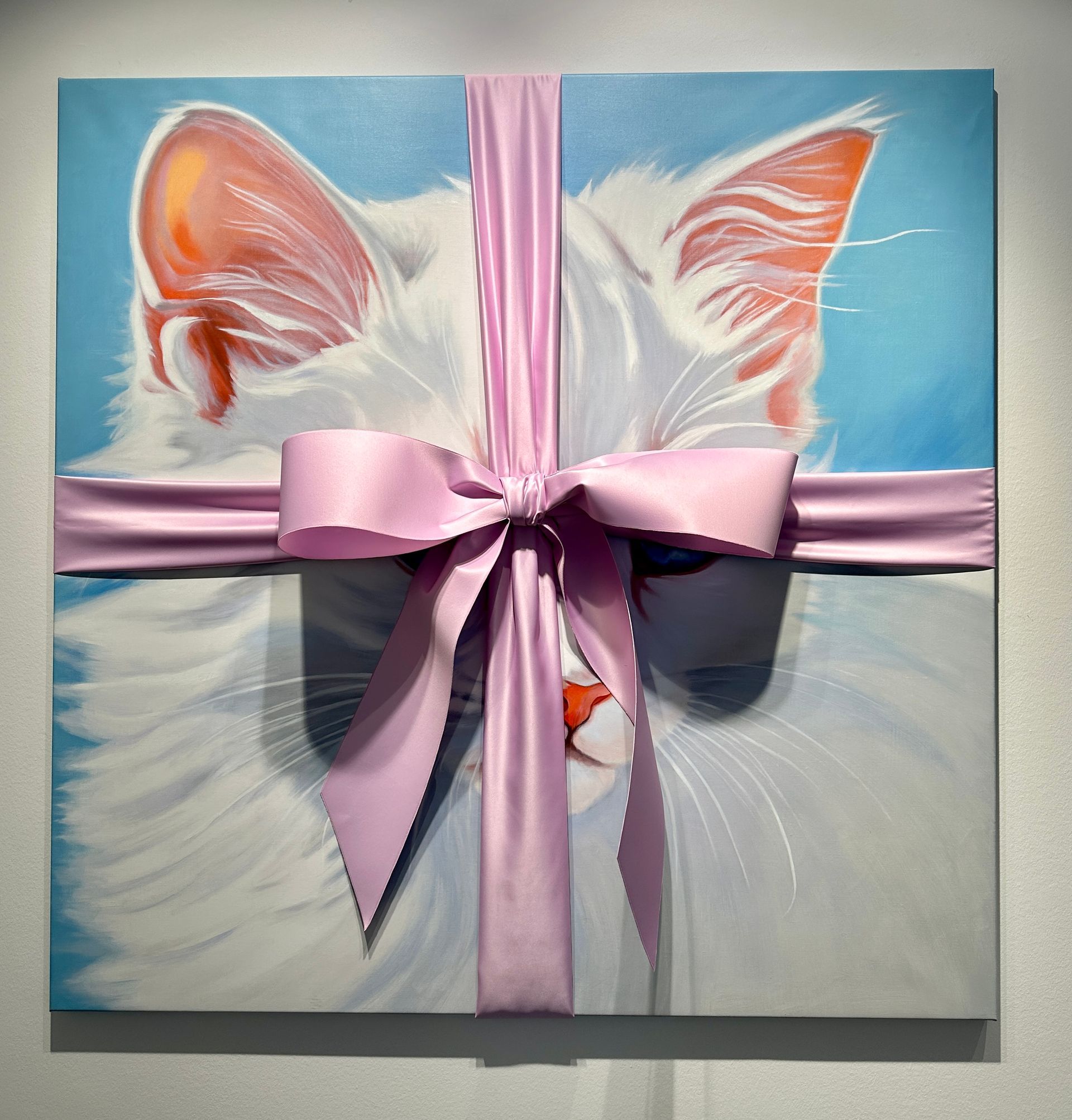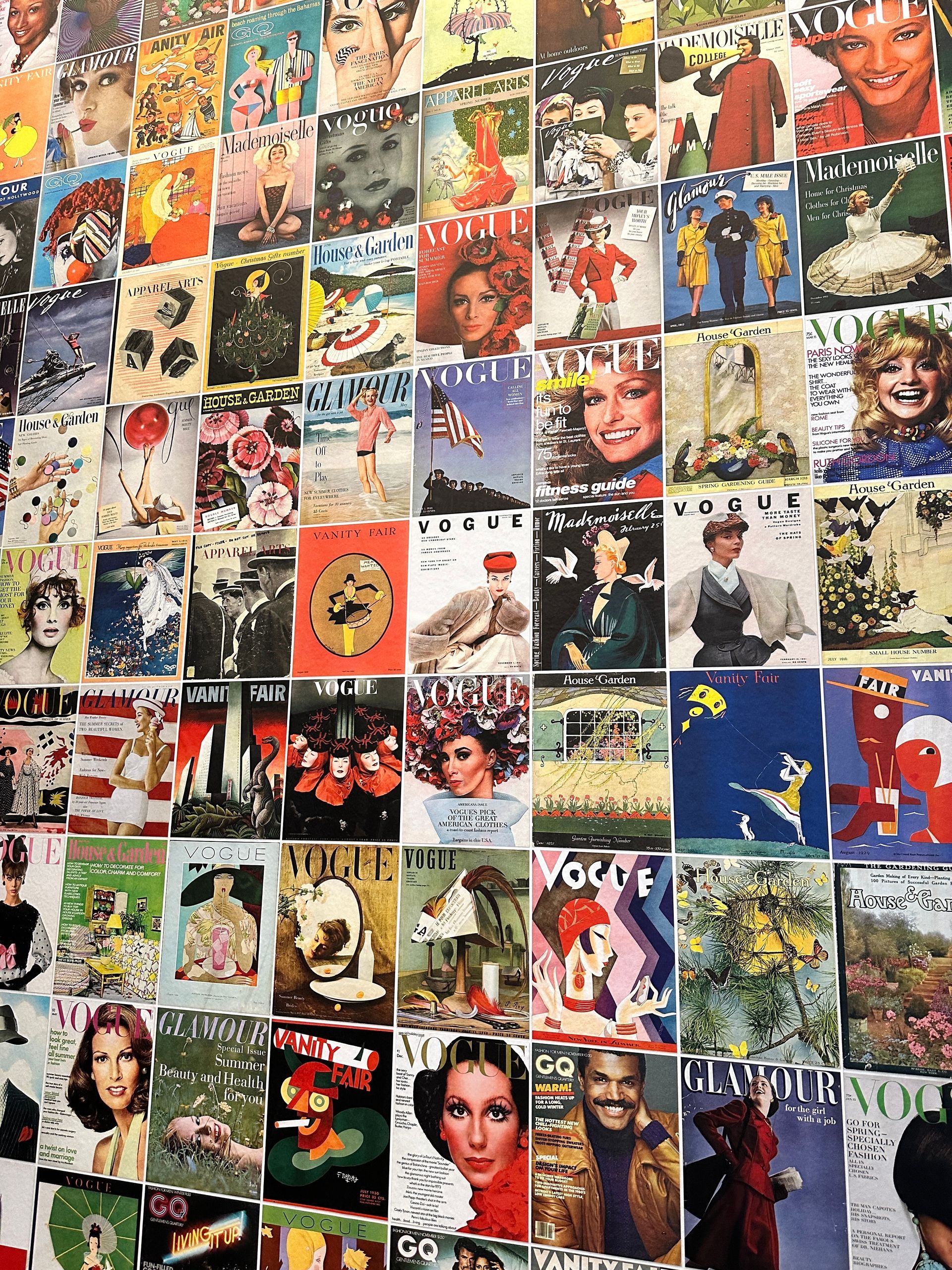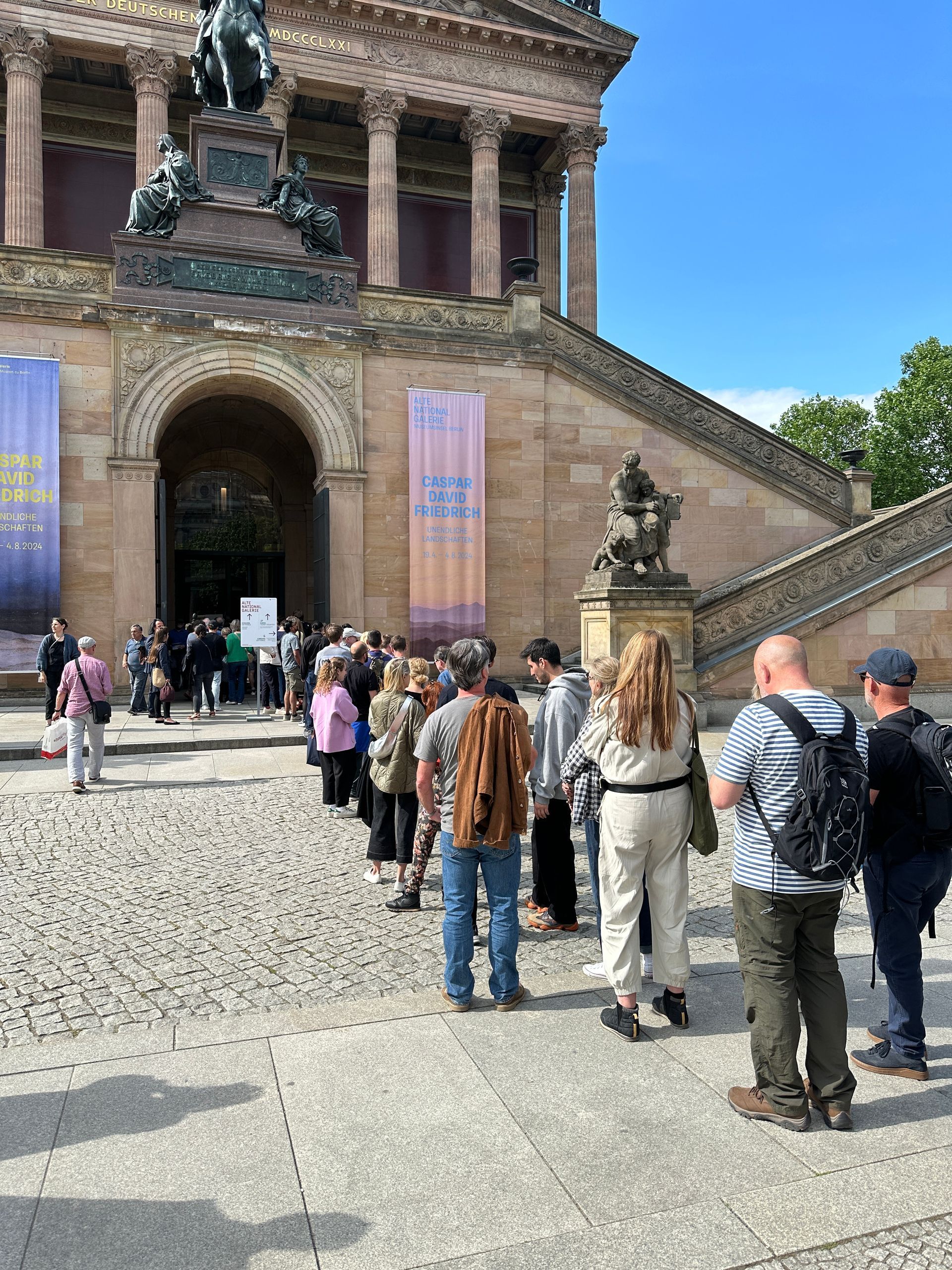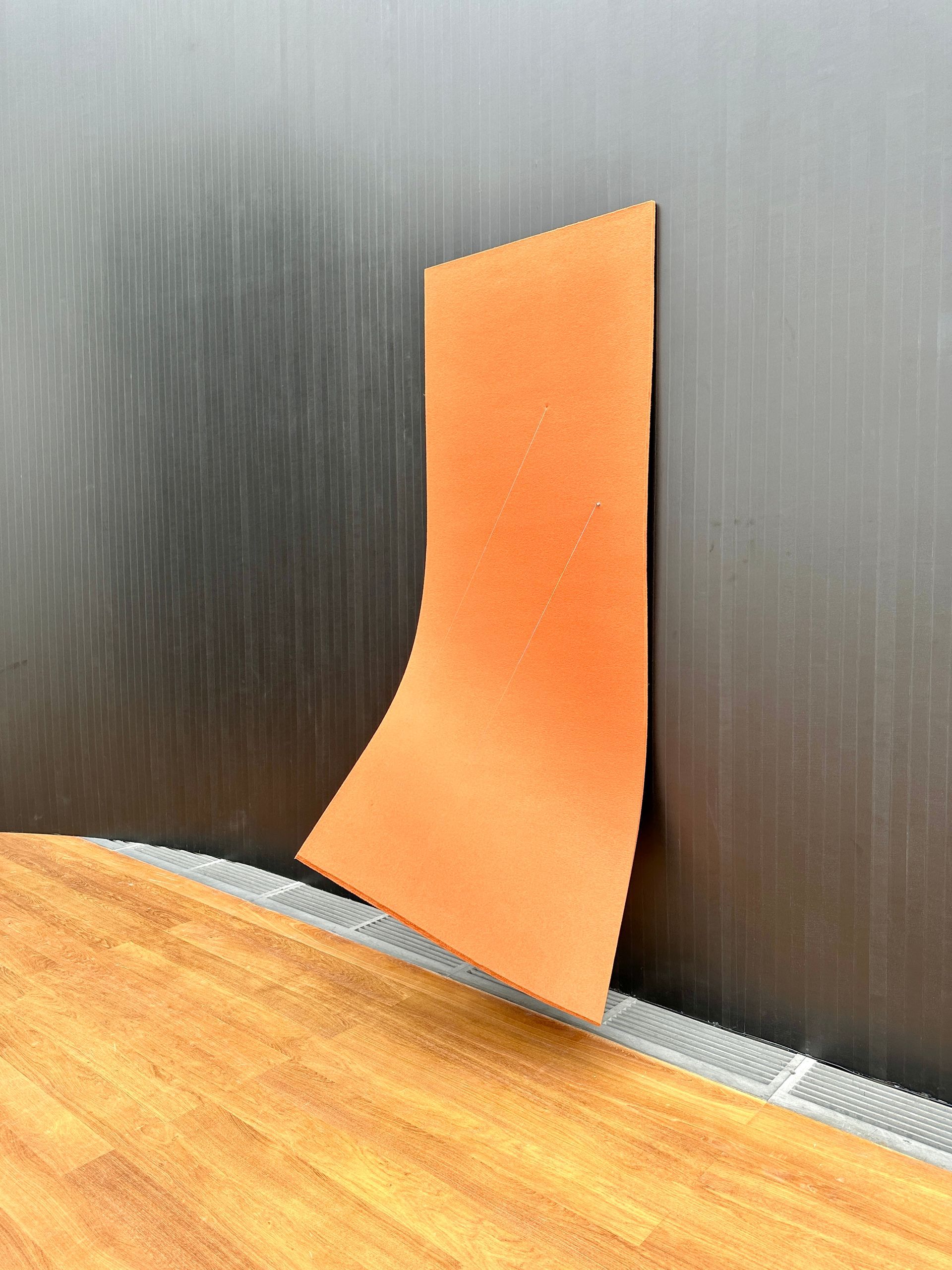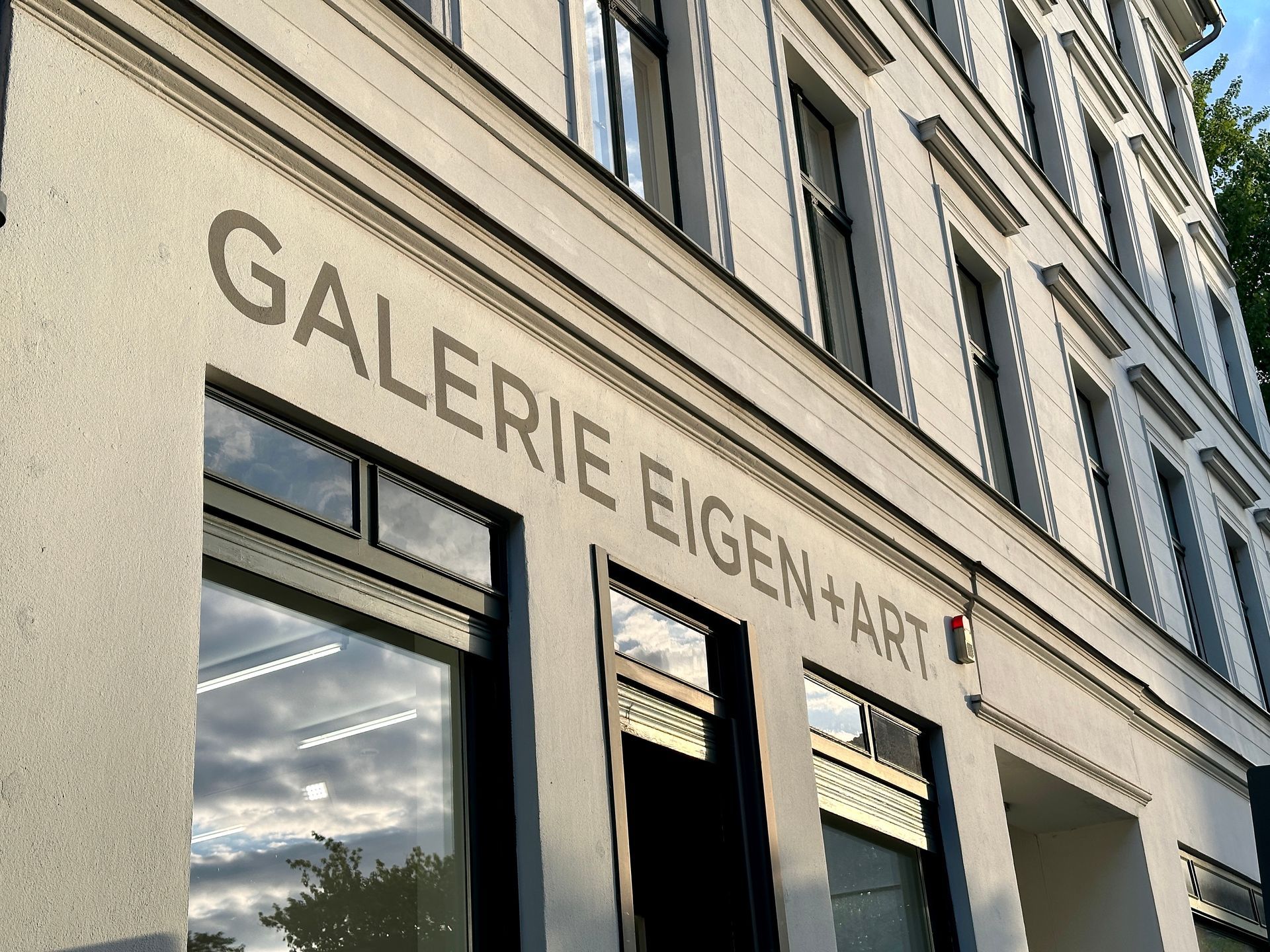Collection Includes Classics: Past and Near-present
The pastel painting (above) by Irish-American Sean Scully is the first piece visitors see upon entering “The Scharf Collection” exhibit. Scully has used a broken grid of warm colors, grays and blacks that come forward or recede according to color temperature. The soft edges and asymmetric arrangement humanize the rigid structure.
Names like Goya, Daumier, Corot, Toulouse-Lautrec, Léger, Matisse, and Picasso are standard in art history books. However, the Scharf Collection includes not only those names, but also later artists, some who may not be as prominent in people’s minds.
This extensive exhibit at the Alte Nationalgalerie, Berlin is a lot to take in, and could have easily filled out two or three separate shows.
German insurance mogul and art lover, Otto Gerstenberg (1848-1935), amassed a collection of mostly 19th century French art, numbering over 100 paintings, 400 drawings and watercolors, 1,500 prints and 28 sculptures. Gerstenberg’s daughter married a Scharf, and since then, the family has continued to expand the collection.
Even though there were so many great paintings in this exhibit, here are ones that stopped me in my tracks:

Here are two of the dozens of Goya etchings on view, illustrating the brutality of war and bullfighting. Goya’s anti-war prints show the gory reality of war. Ironically, Goya loved bullfighting, although in his prints he shows more empathy for the bull than the human participants. This bullfighting etching is interesting not only for the narrative - the bull breaks into the front rows of the ring and kills the mayor of the town (a true story), but more interesting is the composition which is pushed over to the extreme right, as if the bull has powerfully swept the picture to one side and declared itself the winner.

This painting by Daumier is a powerful and direct statement about human perseverance. The interlocking shapes of the sky, land, water, and the human form powerfully underscore the relationship of the elements of the picture.

I am always inspired by Corot’s “subliminal” color palette. I mostly know him through his landscapes, but his subdued palette is also effective in this portrait. The dim interior creates a calm atmosphere. It feels like the model is speaking to us just by being in the stillness. The zig-zagging stripes in the garment add an interesting abstract aspect to the picture.

In this pen and ink drawing by Daumier, in spite of the amorphous tangle of lines, the artist expresses the weight (or lack of weight) and the movement (or dead-as-a-doornail stillness) of these figures. This gestural style reminds me of Rembrandt’s sketches of street people in Amsterdam.

The Scharf Collection includes the largest group of Toulouse-Lautrec lithographs world-wide. This print depicts a brothel madam, approaching a woman who is sitting up in bed. The composition is interesting in that the two figures form an “H” in the center of the picture. The static position of the two women is offset by the patterning and asymmetry of the background. The apparent silence between the two women implies a daily routine that requires no conversation.

I’ve always admired Fernand Léger’s playful way of reducing a picture to basic geometric forms.

This Matisse lithograph unites the figure and environment into one thing. All the elements have to do with each other: the shapes of the fireplace mantel, the chair, and the figure interlock - and then the figure interlocks on itself. The model sits on the chair with convincing weight.

Amazing that Picasso did this paper collage in 1912. But, since he was aesthetically mature by age 15, this collage, done at 31 is no surprise. By that time he had become more than an artist. He had become an inventor.


This large, figurative sculpture by Spanish artist, Balthasar Lobo, gracefully balances itself in the middle of one of the exhibition rooms. Aesthetic cousin to Jean Arp and Constantin Brancusi, Lobo was known for mother-and-child themed sculptures. This piece reminds me of a single figure dancing.

This bright, thoughtful composition by Maurice Estève straddles the world of landscape and pure abstraction. The diagonals in this picture create jagged movements, which are calmed by the arching curves. The hot colors in the painting seem even hotter due to the interspersed cools and neutrals. In addition to painting, Estève was involved with textile design, murals and stained glass.

Tony Cragg’s piece is about movement, growth and erosion. The sculpture refers to shape-shifting forms found in nature (wood, stone, mud, sand), but takes on its own identity as sculpture. This piece leaves room for question marks: Is it disappearing or is it increasing? Are we disappearing too?!

In this large painting, Katharina Grosse has confined herself to the boundaries of the canvas. Typically, she is known for extending painting into the larger environment, such as whole rooms, buildings and outdoor fields. Even though the paint stops at the edges of this rectangle, the painting is large enough for the viewer to get lost inside the picture, as well as imagining the color field extending beyond the perimeter.

Like Katharina Grosse’s painting, Gotthard Graubner’s piece proves that color by itself is enough to sustain a painting. With “tulg” Graubner is adding several additional layers of experience. The pillow form is tactile and almost huggable. At first glance the color reads similar to a blood-orange-red, however if you spend some time with the painting, magentas, yellows and rusts are there too. The piece alludes to atmospheric painters such at Rothko and Turner.

Some of the best art advice I ever got was on a camera walk in Yosemite. The guide said that whenever you saw something that moved you, 1) stop and take the picture because you may not find yourself back at that spot, and 2) remember what initially excited you about the scene. Then when you frame the picture in the viewfinder, position yourself so that you move everything extraneous out of the picture frame. Bonnard certainly did that with this painting. One of Bonnard’s trademarks is ignoring the traditional rules of composition, and here he gives almost all the visual real estate to the bathtub. Even today, the idea of, “Let’s do a painting of the model half-submerged in a bathtub that takes up the whole canvas - looking down from above,” would be considered very imaginative.
This exhibit runs through February 15, 2026.


